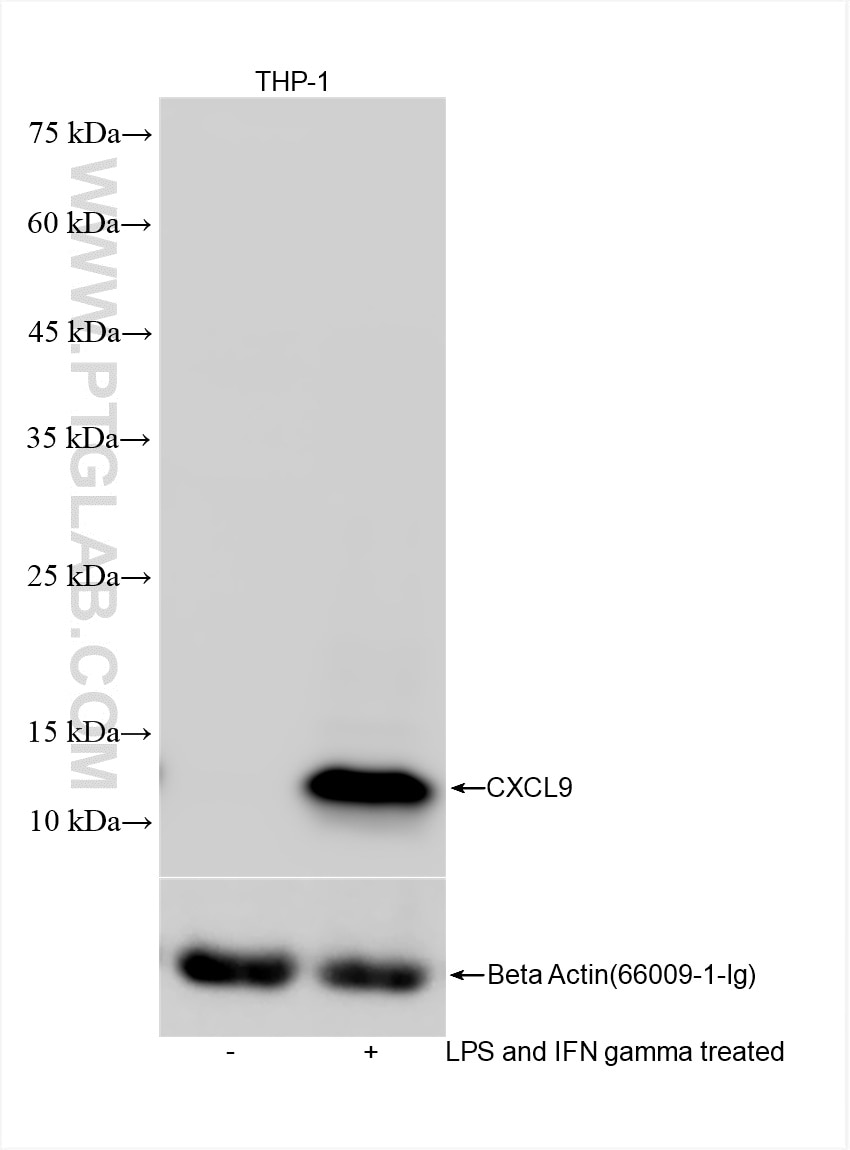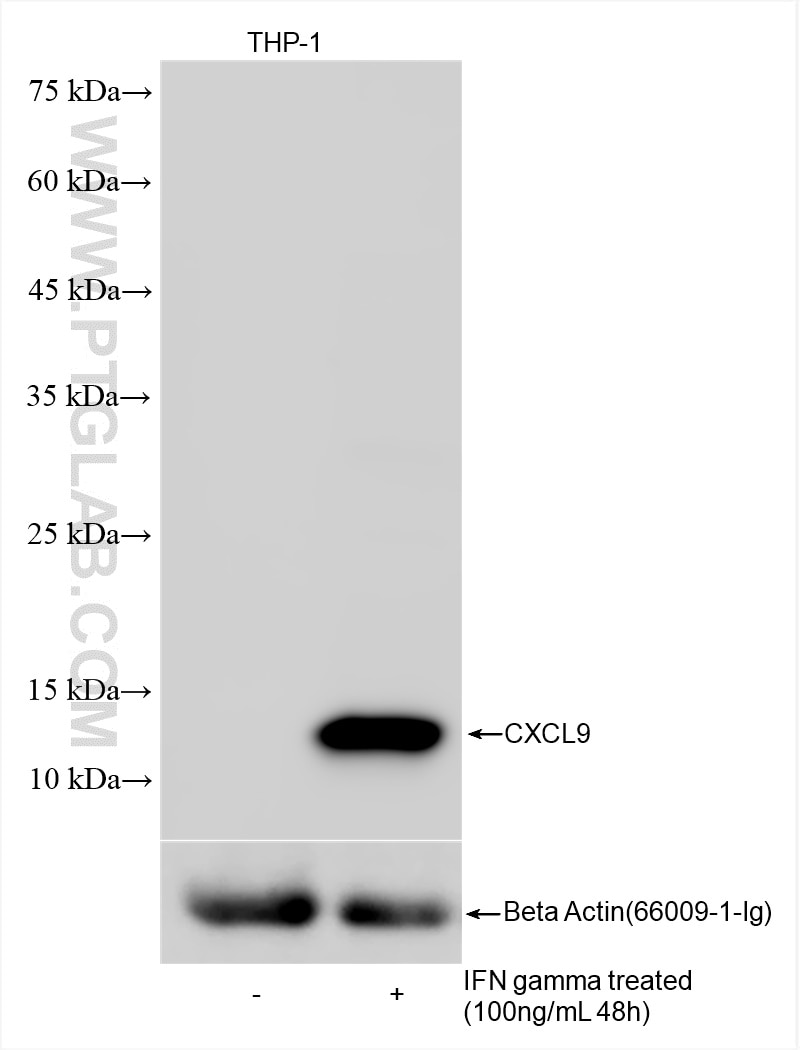CXCL9/MIG Rekombinanter Antikörper
CXCL9/MIG Rekombinant Antikörper für WB, ELISA
Wirt / Isotyp
Kaninchen / IgG
Getestete Reaktivität
human
Anwendung
WB, ELISA
Konjugation
Unkonjugiert
CloneNo.
241437F12
Kat-Nr. : 84427-4-RR
Synonyme
Geprüfte Anwendungen
| Erfolgreiche Detektion in WB | LPS and IFN gamma treated THP-1 cells, IFN gamma treated THP-1 cells |
Empfohlene Verdünnung
| Anwendung | Verdünnung |
|---|---|
| Western Blot (WB) | WB : 1:5000-1:50000 |
| It is recommended that this reagent should be titrated in each testing system to obtain optimal results. | |
| Sample-dependent, check data in validation data gallery | |
Produktinformation
84427-4-RR bindet in WB, ELISA CXCL9/MIG und zeigt Reaktivität mit human
| Getestete Reaktivität | human |
| Wirt / Isotyp | Kaninchen / IgG |
| Klonalität | Rekombinant |
| Typ | Antikörper |
| Immunogen | CXCL9/MIG fusion protein Ag17932 |
| Vollständiger Name | chemokine (C-X-C motif) ligand 9 |
| Berechnetes Molekulargewicht | 14 kDa |
| Beobachtetes Molekulargewicht | 14 kDa |
| GenBank-Zugangsnummer | BC095396 |
| Gene symbol | CXCL9 |
| Gene ID (NCBI) | 4283 |
| Konjugation | Unkonjugiert |
| Form | Liquid |
| Reinigungsmethode | Protein A purfication |
| Lagerungspuffer | PBS with 0.02% sodium azide and 50% glycerol |
| Lagerungsbedingungen | Bei -20°C lagern. Nach dem Versand ein Jahr lang stabil Aliquotieren ist bei -20oC Lagerung nicht notwendig. 20ul Größen enthalten 0,1% BSA. |
Hintergrundinformationen
CXCL9 is a small cytokine known as MIG. CXCL9 is a T-cell chemoattractant, which is induced by IFN-γ. It is closely related to two other CXC chemokines called CXCL10 and CXCL11, whose genes are located near the gene for CXCL9 on human chromosome 4. A high level of CXCL9 revealed in peripheral liquids, can be considered as a marker of host immune response, especially of that involving Th1 cells.
Protokolle
| PRODUKTSPEZIFISCHE PROTOKOLLE | |
|---|---|
| WB protocol for CXCL9/MIG antibody 84427-4-RR | Protokoll herunterladen |
| STANDARD-PROTOKOLLE | |
|---|---|
| Klicken Sie hier, um unsere Standardprotokolle anzuzeigen |



